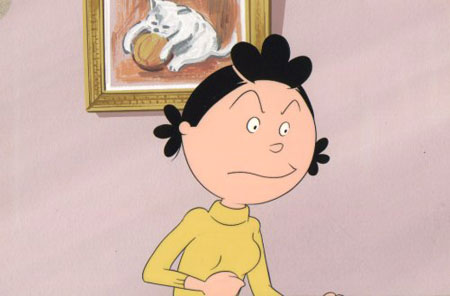Yesterday evening I was lamenting to a Japanese friend of mine that I was suffering from the Sunday Night Blues. I’ve had this problem off and on since school days. Sunday night rolls around, and I didn’t have my homework done, or maybe I didn’t have enough fun over the weekend, or maybe I just didn’t want the week to start because I wasn’t ready to deal with what the week had to offer. Usually, the feeling was mostly a general malaise, but punctuated with occasional dread, and even physical manifestations of anxiety like an elevated heart rate, the shakes, and other fun symptoms. Sound familiar? It would have been nice to have outgrown that feeling but it carried on through work as well. And after the ridiculous email I just got and foolishly read on my BlackBerry I understand why I still get this anxiety even as a seasoned worker.
Actually, in 2010, I wasn’t actually lamenting to a friend in person, or even by the telephone. This lament came by iPhone instant messaging. You can lament and respond at your own pace it seems [wait, let me check Twitter to see if anyone responded to my latest 140 characters or less … nope … OK, continuing …] using instant messaging. Two hours after my complaint, I got a response, “It’s Sazaesan syndrome in Japanese.â€
Hmmmm. I tried to look up Sazaesan in my dictionaries. About the best I could get was, “サザエ†which apparently is a “turban shell (any mollusk of the family Turbinidae, esp. the horned turban, Turbo cornutus).†That doesn’t really apply at all. It was late, I was tired, and I didn’t want to bug my friend anymore, but I fell asleep wondering what the heck a mollusk had to do with my anxiety.
In the morning, I asked my colleagues, “Does anyone know what Sazaesan Syndrome is?” “No, but Sazaesan is TV anime show that has been on forever.†Google was my next resource. Finally, from Wikipedia,

Sazae-san (サザエã•ã‚“) is a Japanese comic strip created by Machiko Hasegawa.
Sazae-san was first published in Hasegawa’s local paper, the Fukunichi Shimbun (フクニãƒæ–°èž), on April 22, 1946. When the Asahi Shimbun (æœæ—¥æ–°èž) wished to have Hasegawa draw the comic strip for their paper, she moved to Tokyo in 1949 with the explanation that the main characters had moved from KyÅ«shÅ« to Tokyo as well. The comic dealt with contemporary situations in Tokyo until Hasegawa retired and ended the comic on February 21, 1974. As one of Japan’s longest running and oldest comic strips and animations, the series is known to nearly every Japanese person, young and old.
The comic was very topical. In the beginning, Sazae was more interested in being herself than dressing up in kimono and makeup to attract her future husband. Hasegawa was forward-thinking in that, in her words, the Isono/Fuguta clan would embody the image of the modern Japanese family after World War II.
Sazae was a very “liberated” woman, and many of the early plotlines revolved around Sazae bossing around her husband, to the consternation of her neighbors, who believed that a man should be the head of his household. Later, Sazae became a feminist and was involved in many comical situations regarding her affiliation with her local women’s lib group.
Despite the topical nature of the comic, the core of the stories revolved around the large family dynamic, and were presented in a lighthearted, easy fashion. In fact, the final comic, in 1974, revolved around Sazae’s happiness that an egg she cracked for her husband’s breakfast produced a double yolk, with Katsuo remarking about the happiness the “little things” in life can bring.
Today, the popular Sazae-san anime is frequently taken as nostalgia for traditional Japanese society (since it lacks modern marvels such as video games and otaku culture), even though it was leftist to the point of controversy when it originally ran in Japanese newspapers.
In October 1969, Fuji Television started an animated comedy series, which is still on the air today and currently in production (making it the longest-running animated TV series in history). It has been broadcast every Sunday from 6:30 to 7:00 p.m. and contains three vignettes. The animated series has some characters, like Katsuo’s classmates, who don’t appear in Hasegawa’s original works.
Well, I’m not Japanese but now I know too. But what does this have to do with a syndrome? Note that the TV show broadcasts EVERY SUNDAY from 6:30 pm to 7:00 pm. For many, it is a reminder that the weekend is quickly ending and the work week is approaching. The gloom they experience (as I described above) around this time on a Sunday night is Sazae-san Syndrome. Pretty cool, huh? Here’s a good article about Hasegawa, the strip, the TV show, and the syndrome.
This is covered in multiple blogs and mine is just another one, but it was new to me and that is what this blog is about. And now instead of saying, “The Sunday Night Blues†I now can label my melancholy as a syndrome.
But that’s not the only syndrome that I know either. There’s another great syndrome, metabolic syndrome. Folks use it a lot in Japan for drinking too much beer and getting older, not exercising, and generally getting squishier.
I thought it was a just a Japanese thing, but then I checked in, yup, Wikipedia and found it is, “a combination of medical disorders that increase the risk of developing cardiovascular disease and diabetes.†I won’t link because there is a really gross picture.
I didn’t know you wrote these 🙂 interesting read